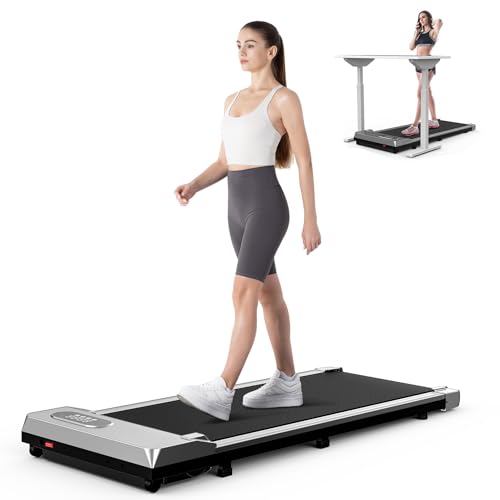10 Things Everyone Gets Wrong About Walking Machine

The Walking Machine: A Comprehensive Guide to Your Fitness Companion
In today's hectic world, where time is a high-end, preserving a consistent exercise regimen can be a challenge. For many, a walking machine-- commonly called a treadmill-- acts as a perfect physical fitness companion. This short article offers an extensive look at walking machines, including their advantages, types, maintenance pointers, and regularly asked questions.
Why Choose a Walking Machine?
Walking machines offer a practical and reliable method to incorporate cardiovascular exercise into every day life. Here are numerous key benefits:
- Convenience: Walking machines permit individuals to work out anytime, no matter climate condition or time restraints. click here for more are best for busy schedules.
- Flexibility: Users can walk, jog, or perform at their own speed and intensity.
- Security: Walking machines present a lower danger of injury compared to outside walking or running, specifically for beginners or those recuperating from injuries.
- Tracking Progress: Many treadmills come with built-in displays that track metrics like speed, distance, and calories burned.
Kinds Of Walking Machines
When thinking about a walking machine, it's vital to choose the best type based upon private physical fitness goals and space restraints. Below are the primary types of walking machines:
| Type | Description |
|---|---|
| Manual Treadmills | These machines do not have a motor, and users need to walk or go to rotate the belt. |
| Electric Treadmills | Powered by an electric motor, enabling users to set the speed and slope effortlessly. |
| Folding Treadmills | Created for easy storage, these treadmills can be folded up when not in use. |
| Desk Treadmills | Suitable for a double work and exercise environment, these compact machines permit walking while working. |
| Slope Trainers | These enable users to mimic uphill walking, improving workout strength and calorie burn. |
Choosing the Right Walking Machine
Choosing the right walking machine can substantially affect inspiration and efficiency. Here are some elements to consider:
Key Features to Look For
- Motor Power: An effective motor guarantees a smooth and consistent workout. For periodic walkers, a 1.5 HP motor is usually adequate; for much heavier usage, try to find 3.0 HP and above.
- Belt Size: A larger and longer belt provides more space for a comfy stride. Requirement sizes range from 16 inches wide and 50 inches long.
- Incline Options: Adjustable incline settings can simulate walking or running uphill, increasing the strength of the exercise.
- Shock Absorption: Good shock absorption lowers the threat of joint injuries and enhances comfort.
- Console Features: Look for integrated exercises, heart rate monitors, and connection features like Bluetooth for a more interesting experience.
Budget plan Considerations
Walking machines can be found in a large range of costs, depending upon features and building and construction quality. Here's a rough budget plan breakdown:
| Price Range | Functions |
|---|---|
| Under ₤ 300 | Fundamental manual or small electric treadmills with limited features. |
| ₤ 300 - ₤ 700 | More sophisticated electric treadmills with incline, medium power motors, and better guarantees. |
| ₤ 700 - ₤ 1500 | Top quality electric treadmills with bigger built-in display screens, substantial features, and guarantees. |
| ₤ 1500 and above | High-end models offering sophisticated technology, features, and long lasting building for serious physical fitness lovers. |
Upkeep Tips for Your Walking Machine
To ensure longevity and ideal efficiency of a walking machine, think about the following upkeep ideas:
- Regular Cleaning: Dust and sweat can collect on the machine and the belt. Wipe down the surfaces and tidy the belt regularly.
- Lubrication: Depending on the design, oiling the running belt periodically can prevent wear and tear. Check the manufacturer standards for recommended lubrication schedules.
- Examination: Periodically inspect the machine for loose screws or used parts. Tighten and change as needed.
- Calibration: Occasionally, examine the calibration of your machine's metrics to ensure they provide precise data.
- Appropriate Use: Follow the maker's recommendations for weight limitations and operational guidelines.
Frequently Asked Questions About Walking Machines
1. Are walking machines a great exercise?
Yes, walking machines supply an outstanding cardiovascular exercise, can aid with weight-loss, and improve overall health.
2. How frequently should I use a walking machine?
Go for a minimum of 150 minutes of moderate-intensity aerobic activity per week, which can quickly be achieved with regular sessions on a walking machine.
3. Can I lose weight on a walking machine?
Yes, incorporating a walking machine regimen into a healthy diet plan can promote weight-loss, specifically if integrated with intervals and incline training.
4. Is it safe for senior citizens to utilize a walking machine?
Yes, walking machines can be safe for seniors with low-impact settings and security features like handrails. However, individuals ought to seek advice from their doctor before starting any workout program.
5. What's the difference between a treadmill and a walking machine?
The term "walking machine" usually refers to a treadmill intended for walking, while "treadmill" can describe machines used for various strengths, including running.
With their versatility and benefit, walking machines can significantly boost one's physical fitness journey. By carefully picking the best type, making sure proper maintenance, and including different exercise methods, users can maximize their walking machine's advantages. As with any workout routine, consistency is key to attaining long lasting physical fitness results.

